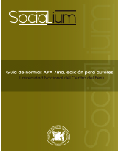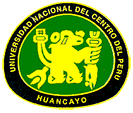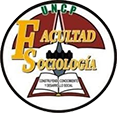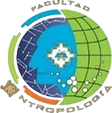Effects of an educative program for talent development in female children from Peru’s vulnerable zones
DOI:
https://doi.org/10.26490/uncp.sl.2020.4.1.507Keywords:
childhood, multiple intelligences, vulnerabilityAbstract
The research’s objective was to find out if the TALENTVEFT program has any effect on the development of multiple intelligences in children. The study, of explanatory level, used the experimental method and a quasi-experimental design of longitudinal cut. The sample consisted of 182 students, divided into two groups: the experimental group and the control group. The experimental group participated in 4 one-hour sessions for 4 weeks (one session per week). The control group did not participate in any workshops. Both groups were evaluated before and after (pretest and postest) the intervention with the Armstrong professor’s inventory of multiple intelligences, adapted by Prieto and Ballester (Alvarez, 2014). The results showed statistically significant differences between the two measurement moments at the level of interpersonal intelligence (t = 7,752 / p = ,000) and intrapersonal intelligence (t = 7,416 / p = ,000). This allows us to suggest the effectiveness of the program and to leave the possibility of its replication open, considering also the reliability and validity of its evaluation tools.
References
Álvarez, D. (2014). Eficacia de las inteligencias múltiples en nuestras aulas (tesis de maestría). Universidad Internacional de la Rioja, Murcia, España.
Blanchette, J., Nenciovici, L., Brault, L. M., Allaire Duquette, G., Riopel, M., y Masson, S. (2018). Effects of Teaching the Concept of Neuroplasticity to Induce a Growth Mindset on Motivation, Achievement, and Brain Activity: A Meta-Analysis. Trends in Neuroscience and Education, 12, 22-31. Recuperado de https://doi.org/10.1016/j.tine.2018.07.003
Borland, J. (1989). Planning and Implementing Programs for the Gifted. Nueva York, Estados Unidos: Teachers College Press.
Castejón, J. L. y Prieto, M. D. (eds.). (2000). Los superdotados, esos alumnos excepcionales. Málaga, España: Aljibe.
Clynes, T. (2016). How to raise a genius. Nature, 537, 152-155. Recuperado de https://www.nature.com/articles/537152a.pdf?origin=ppub
Gagné, F. (2015). Academic talent development programs: a best practices model. Asia Pacific Education Review, 16, 281–295. doi:10.1007/s12564-015-9366-9
Gardner, H. (1993). La mente no escolarizada: cómo piensan los niños y cómo deberían enseñar las escuelas. Buenos Aires, Argentina: Paidós Ibérica.
Harvard Graduate School of Education. (15 de noviembre de 2018). Project Zero. Recuperado de http://www.pz.harvard.edu/projects/investigating-impacts-of-educational-experiences
Jackson, F. y Brown, R. (2009). Exploring Whether Multiple Intelligences Facilitate ‘Valuing and Working With Difference’ within Mathematics Classrooms. Trabajo presentado en la 32nd annual conference of the Mathematics Education Research Group of Australasia de la Griffith University, Queensland, Australia. Recuperado de https://research-repository.griffith.edu.au/bitstream/handle/10072/31814/60550_1.pdf?sequence=1
Jensen, E. (2009). Teaching with poverty in mind. Alexandria VA, Estados Unidos: ASDC.
Macías, M. A. (2002). Las múltiples inteligencias. Psicología desde el Caribe, 10, 27-38. Recuperado de https://www.redalyc.org/pdf/213/21301003.pdf
Minedu. (2003). Ley General de Educación - Ley n.o 28044. Lima: Minedu.
Monje, C. A. (2011). Metodología de la investigación cuantitativa y cualitativa. Guía didáctica. Neiva, Colombia: Universidad Surcolombiana. Recuperado de https://www.uv.mx/rmipe/files/2017/02/Guia-didactica-metodologia-de-la-investigacion.pdf
Muñoz, M. (2017). Aplicación de la estrategia del plan lector para mejorar la comprensión lectora en los estudiantes de 5to. grado de educación primaria de la I. E. 3079 - Carabayllo, 2017 (Tesis de maestría). Universidad César Vallejo, Lima. Recuperado de http://repositorio.ucv.edu.pe/handle/UCV/14988
Red Nacional de Educación de la Niña Florecer. (2015). Recomendaciónes de política de género en Educación. Lima: Unicef Perú.
Robinson, K. y Aronica, L. (2009). El elemento. Barcelona, España: Penguin Random House.
Sánchez, G., Jímez Gómez, F., Ávila, A., y Merino Barragán, V. (1999). Psicopatología y fiabilidad: un análisis comparativo de las escalas de validez entre MCMI-II y MCMI-2. Revista Iberoamericana de Diagnóstico y Evaluación Psicológica, 1, 115-125. Recuperado de https://www.aidep.org/sites/default/files/articles/R07/R078.pdf
Santiváñez, V. (2010). La educación para la diversidad en Lationamérica: Caso Perú. Cultura, 24, 1-20. Recuperado de http://www.revistacultura.com.pe/revistas/RCU_24_1_la-educacion-para-la-diversidad-en-latinoamerica-caso-peru.pdf
Schwartz, K. (13 de enero de 2015). How Integrating Arts Into Other Subjects Makes Learning Come Alive. KQED News. Recuperado de https://www.kqed.org/mindshift/38576/how-integrating-arts-into-other-subjects-makes-learning-come-alive
Sosic-Vasic, Z. y Spitzer, M. (2018). Trends in Neuroscience and Education. Elsevier.
Unesco. (2015). Replantear la educación. ¿Hacia un bien común mundial? París, Francia: Ediciones Unesco.
Downloads
Published
Issue
Section
License

This work is licensed under a Creative Commons Attribution-NonCommercial-ShareAlike 4.0 International License.








.jpg)















